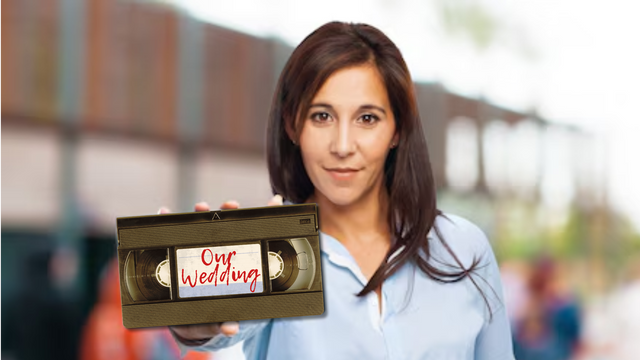You’re the hero of your family’s photo story. Boxes of prints, albums, and shoebox treasures sit waiting—but which settings will actually do them justice? If you’ve asked what does DPI stand for or whether 300 DPI is “good enough,” you’re not alone. In this guide, we’ll explain DPI in plain language, show when 600 DPI makes a visible difference, and give you a simple plan to scan confidently so your photos look great today and tomorrow.
What Is DPI?
DPI stands for dots per inch—a measure of image detail. The higher the DPI, the more information your scan captures from the original print. Think of DPI like a net: a 300 DPI net catches the “big fish” (basic detail), while a 600 DPI net catches both the big and the small (fine textures like film grain, fabric, eyelashes, and subtle edges).
When you digitize at 600 DPI, you retain more editing latitude for color correction and restoration, and you can reprint larger without introducing blur or pixelation. That’s why Heirloom’s professional recommendation is clear: scan photos at 600, not 300.
300 DPI vs 600 DPI—When It Matters
If your goal is to view photos on a phone, 300 DPI might look okay at first glance. But the moment you zoom, crop, restore, or reprint, 300’s limitations show up. Here’s when 600 DPI shines:
- Small originals (3×5, 4×6, wallet prints): More pixels = better enlargements.
- Restoration & retouching: Dust/scratch repair and color fixes need extra detail.
- Archive quality: Future you (or your kids) will want room to edit and reprint.
- Fine textures & faces: Skin, hair, and fabric patterns look noticeably sharper.
In short: 300 DPI is adequate for basic viewing; 600 DPI is the safe choice for lasting quality and flexibility.

Why 600 DPI Is Ideal for Most Photo Projects
- Sharper enlargements: 600 DPI scans hold up better for 8×10, 11×14, and larger.
- Better AI/ML enhancements: Upscaling and restoration tools perform best with higher-detail inputs.
- Insurance against damage: If the original fades or is lost, a richer master file matters.
- Consistent results: Mixed photo sizes (3×5 to 5×7) look cohesive in albums, slideshows, and prints.
Heirloom’s approach: capture a high-quality master scan at 600 DPI, while you still can. This preserves options without extra rescanning.
Practical DPI Tips for Albums, Slides & Negatives
- Loose prints & album pages: 600 DPI for individual photos; if scanning full album pages, capture at high resolution and crop individual images afterward.
- Slides & negatives: DPI is measured differently (often as PPI at the sensor), but the principle is the same—more detail is better. For film, choose a professional scan designed for high dynamic range and grain-level detail.
- File size vs quality: Storage is affordable; reshooting isn’t. Keep a master at 600 and smaller “viewer” copies for everyday use.
If you want expert help, Heirloom offers photo scanning that balances resolution, color accuracy, and careful handling—ideal for prints, photo albums, photo slides, and photo negatives.

Your Simple Plan
1) Gather your photos by event (weddings, vacations, kids).
2) Decide on a master resolution—600 DPI for prints is our baseline.
3) Digitize with a trusted partner. Start with America’s best digitizing service for transparent pricing and pro handling.
4) Organize & share curated albums; export smaller copies for phones.
5) Rest easy knowing you’ve preserved your story with room to reprint, restore, and relive.
Avoid the disappointment of under-scanned images. Choose 600 DPI now, and your future projects—slideshows, wall prints, gifts—will look the way you hoped.
FAQ: People Also Ask
What does DPI stand for in scanning?
DPI means dots per inch—a measure of how much detail a scanner captures from your photo.
What is DPI in practical terms?
Higher DPI equals more pixels and finer detail. It improves zooming, cropping, restoration, and print clarity.
Is 300 DPI good for photos?
300 DPI is acceptable for basic viewing, but 600 DPI is recommended for reprints, edits, and long-term archiving.
Should I scan old photos at 600 DPI or 300 DPI?
Choose 600 DPI. It preserves texture, edges, and facial detail—critical for restoration and enlargements.
Does higher DPI always mean better quality?
Up to a point, yes. For prints, 600 DPI balances quality and file size. For film (slides/negatives), specialized high-resolution scans are best.
Recommended Next Reads
300 DPI vs 600 DPI: Which Photo Scan Resolution Is Best?
Negative Photography: How to Make a Photo from a Negative
Photo Album Memories: How to Scan, Save & Share What Matters
How to Convert Slides to Digital: A Simple Guide to Saving Priceless Photos
Photo Scanning Service: Your Memories Deserve More Than a Shoebox
📧 Want more tips like this?
Subscribe to Heirloom emails to get expert tips on memory preservation, exclusive discount codes, and early access to digitizing services. We never spam, and it’s easy to unsubscribe anytime.


